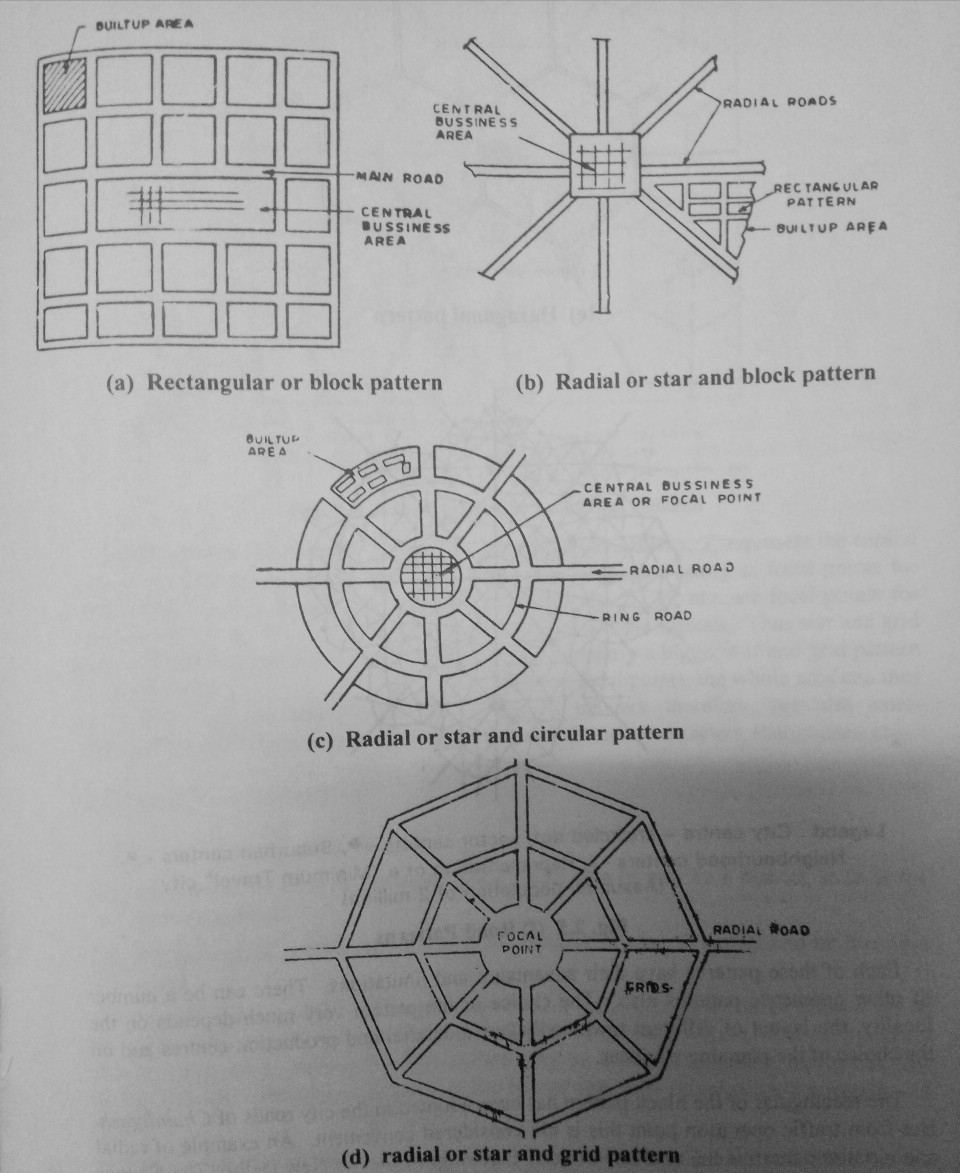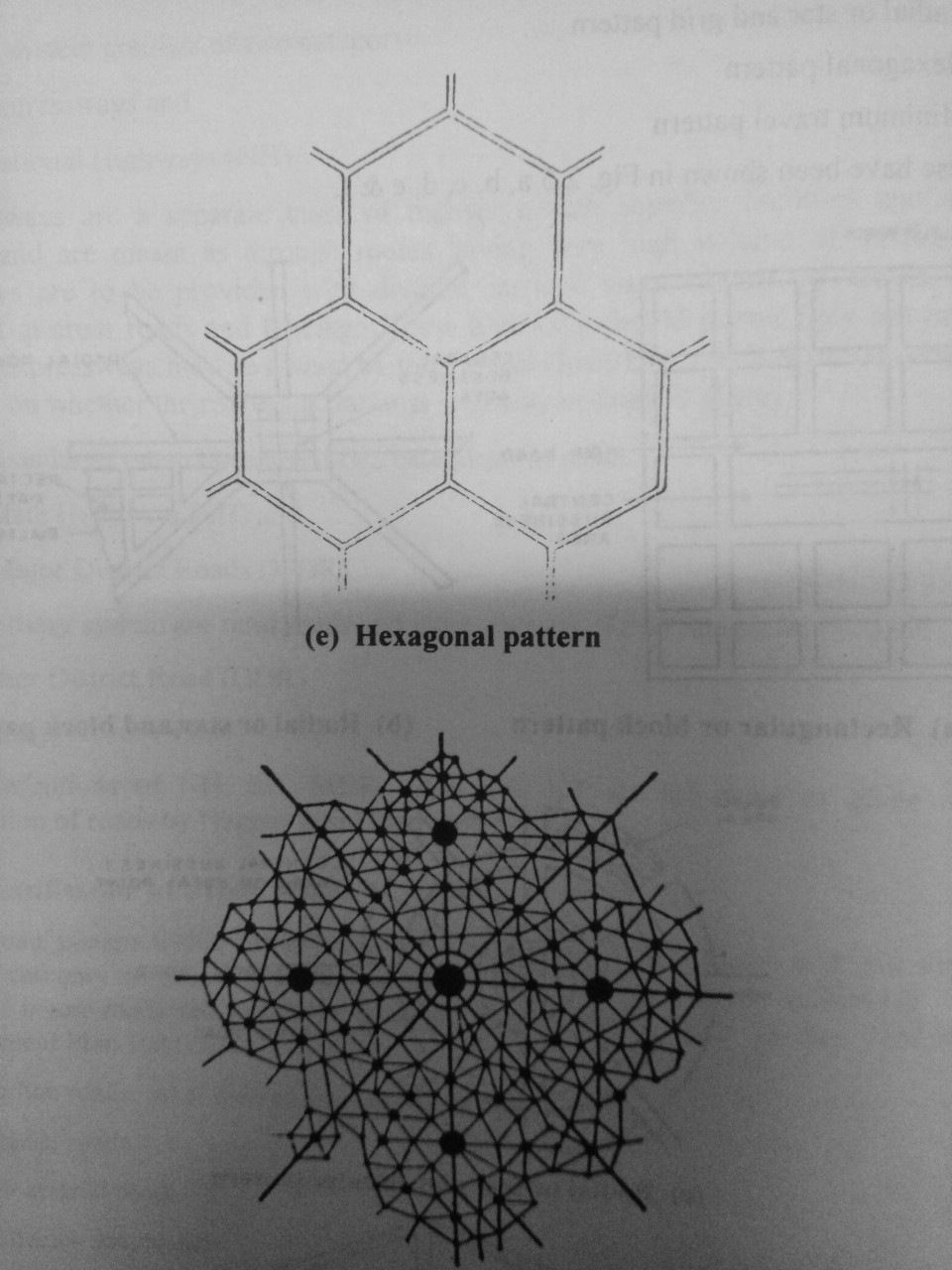DIFFERENT MODES OF TRANSPORTATION
Three basic modes of transport are by land, water and air. Land has given scope tor
development of road and rail transport. Water and air have developed waterways and
airways, respectively. The roads or the highways not only include the modern highway
system but also the city streets, feeder roads and village roads, catering for a wide range
of road vehicles and the pedestrians. Railways have been developed both for long
distance transportation and for urban travel. Waterways include oceans, rivers, canals
and lakes for the movement of ships and boats. The aircraft and helicopters use the
airways.
Apart from these major modes of transportation, other modes include pipe lines,
elevators, belt conveyors, cable cars, aerial ropeways and monorails. Pipe lines are used
for the transportation of water, other fluids and even solid particles.
The four major modes of transportation are:
i) Roadways or highways
(ii) Railways
(iii) Waterways
(iv) Airways
The transportation by air is the fastest among the four modes. Air travel also provides
more comtort apart irom saving in transportation time for the passengers and the goods
between the airports. Transportation by water Is the slowest among the tour modes; but
this mode needs minimum energy to haul unit load through unit distance. The
transportation by water is poSSible between the ports on the sea routes or along the rivers
or canals where inland transportation facilities are available.
The transportation along the railway track could be advantageous by railways between
the stations both for the passengers and goods, particularly for longer distances. 1hese
railway tracks could serve as arteries tor transportation by land and the roads could serve
as feeder system for transportation to the interior parts and to the intermediate localities
between the railway stations. The energy requirement to haul unit load through unit
distance by the railway 1s only a iraction (one fourth to one sixth) of that required by road.
Therefore full advantage of this mode should be taken for the transportation of bulk goods
along land where the railway tacilities are available.
The transportation by road is the only mode which could give maximum service to one
and all. This mode has also the maximum flexibility for travel with reterence to route,
direction, time and speed of travel etc. through any mode of road vehicie. ft is possible to
provide door to door service only by road transport. The other three modes, viz., airways,
waterways and railways have to depend on transportation by roads tor the service to and
from their respective terminals, airports, harbours or stations. ne road net work is
therefore needed not only to serve as feeder system for other modes o uportation and
to supplement them, but also to provIde independent raciny to ro vet by a well
planned net work of roads throughout the country.
covered under Koad En
CHARACTERISTICS OF ROAD TRANSPORT
Is an accepted fact that of all the modes the transportation, road transpot is the
st tO tne people. The passengers and the goods have to be first transportea by road
cacning a railway station or a port or an airport. The road netwOrk alone could
serve the remotest villages of the vast country like ours.
The characteristics of road transport are briefly listed here.
(i) Roads are used by various types of road vehicles, like passenger cars, buses, trucks,
wo and three wheeled automobiles, pedal cycles and animal drawn vehicles. But
raiiway tracks are used only by rail locomotives and wagons, waterways are used
by only ships and boats.
(ii) Road transport requires a relatively small investment for the government. Motor
vehicles are much cheaper than other carriers like rail locomotives and wagons,
water and air carriers. Construction and maintenance of roads is also cheaper than
that of railway tracks, docks, harbours and airports.
(iii) Road transport offers a complete freedom to road users to transfer the vehicle from one lane to another and from one road to another according to the need and convenience. This flexibility of changes in location, direction, speed and timings of travel is not available to other modes of transport.
(iv) In particular for short distance travel, road transport saves time. Trains stop at
junctions and main stations for comparatively longer time.
(v) Speed of movement is directly related with the severity of accident. The road safety decreases with increasing dispersion in speed. Koad transport is subjected to a high
degree of accidents due to the tlexibility or movements offered to the road users.
Derailment of railway 1ocomouves and air crash of air planes are also not uncommon. 1hey are in ract more disastrous.
(vi) Road transport is the only means or transport that offers itself to the whole
Community alike.


















